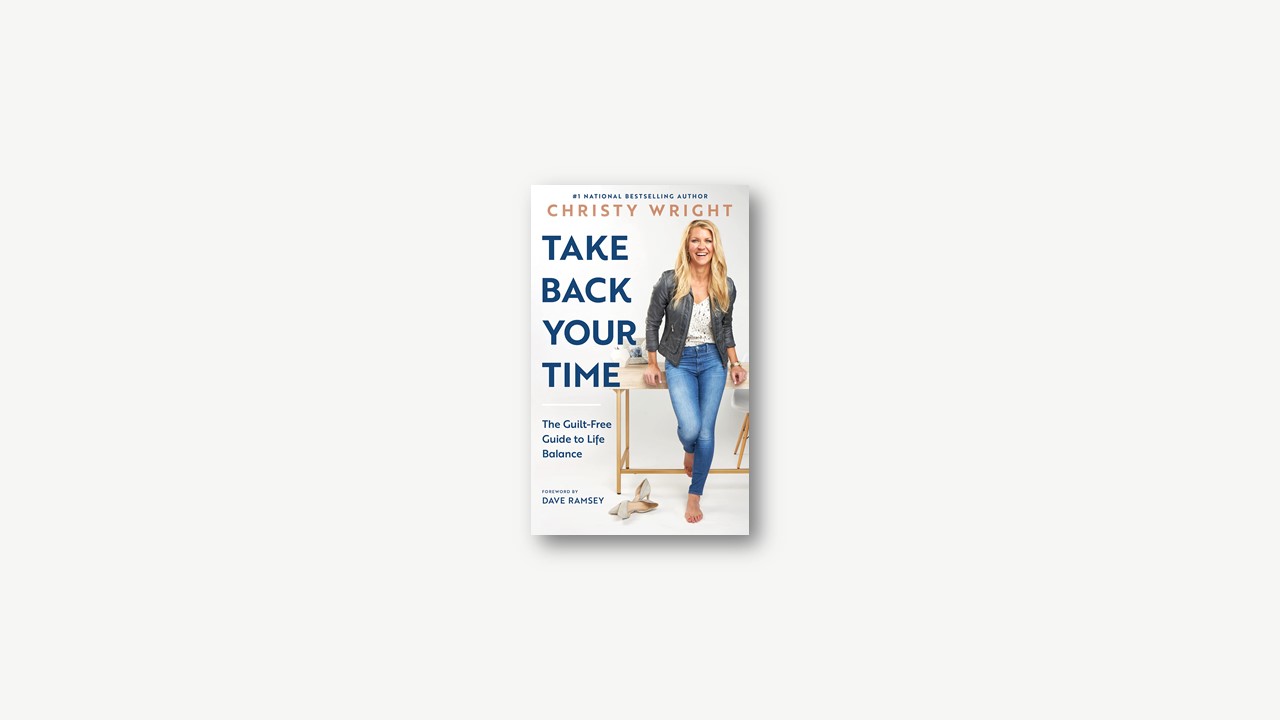Redefining Balance
When we talk about life balance, we’re usually referring to how we divide our time between our work life and our home life. Maybe you’ve always thought life balance means working 50 percent of the time and having a life 50 percent of the time. Or maybe you think it means doing everything for an equal amount of time, like dividing a pie into perfectly equal parts or spinning all those plates.
When something feels off with that balance, we often try to fix our calendars and our to-do lists. We think, I just need to be more efficient and more productive. We tweak and shift things around, thinking we can come up with some magic solution that will help us feel perfectly balanced. But even after all of our fixing, we still feel as if something’s not quite right.
That’s because balance doesn’t come from getting more done. You and I have tried that, and it hasn’t worked. Here’s the good news: there’s a way to create balance that does work.
Here it is:
Life balance isn’t about doing everything for an equal amount of time. Life balance is about doing the right things at the right time. It’s about spending your one life on what matters to you.
The Path to Balance
This plan is not complicated or overwhelming. It is simple and it works. Let’s look at a brief overview of the five steps in The Path to Balance.
Step 1: Decide What Matters
When we talk about life balance, what we are often referring to is time management. We want to feel good about how we spend our time and how we manage our schedules. The only problem is that it’s really hard to see how things should be or could be when you’re knee deep in the weeds of your own life. You’re running kids from hockey practice to violin lessons to karate. You have back-to-back meetings all day sandwiched between a Bible study in the morning and a committee meeting at night. You’re rushing to keep up but always have this feeling that you’re coming from behind. How in the world are you supposed to figure out what balance means, much less create it, when you’re running around like a crazy person?
That’s why for the first step in The Path to Balance, take a moment and zoom out. Trying to change your schedule or clear your calendar isn’t going to be enough. Instead, you need to get out of the weeds long enough to consider one important question: What matters most to you? Your answer to this question will inform the steps that follow and determine the schedule you create so that you can spend your one life on those things.
Step 2: Stop Doing What Doesn’t Matter
Once you decide what matters to you, the next step on The Path to Balance is to stop doing what doesn’t matter. This is where you ditch the distractions in your life. A distraction is anything that isn’t important to you. These are things that we don’t really care about in the grand scheme of things, yet we often spend a lot of time on them whether we realize it or not.
So how do you know if something is truly a distraction? When you spend time deciding what matters to you in Step 1, you will have a new clarity in your life. What naturally happens next is that the things that don’t matter become much more obvious. Suddenly, you’ll realize things you didn’t notice before.
In Step 2, you’re going to identify everything in your life that’s not important. These are the things that need to go. Distractions are a major source of stress and anxiety in your life, and when you get rid of them, you free yourself up to focus on what matters most to you and you get to actually enjoy your life.
Step 3: Create a Schedule That Reflects What Matters
Dave Ramsey often says, “I can tell what you actually care about by looking at your bank account and your calendar, because that’s where you spend your money and that’s where you spend your time.”
Many of us take a passive approach to our lives, which leads us to spend time on things that we don’t actually care about. We react to opportunities and then feel resentful. We look at our calendar to see where we are supposed to be, never considering if where we’re going is where we actually want to be. You’ll never feel balanced if you continue to live your life this way.
That’s why Step 3 on The Path to Balance is to create a schedule that reflects what matters to you—the values you identified in Step 1. This schedule will reflect what is most important to you, and it will not include (or it will at least minimize) those things that are not important to you.
You get to call the shots and decide where your time is spent. Then, although you may still be busy at times, you will feel a sense of balance because you’re no longer doing everything; you’re doing the right things. You’re doing the things that allow you to be the person you want to be and live the life you want to lead.
Step 4: Protect What Matters
Isn’t it funny how willing people are to tell you what should be important in your life? They really are. Everywhere you turn, someone is trying to pressure you or persuade you to think and act just like they do.
Whether you’re dealing with your wedding plans or your weekend plans, you have to learn to protect what matters. This is where you get to exercise your confidence muscle. Step 4 in The Path to Balance is all about setting boundaries, saying no, and protecting what matters most.
Step 5: Be Present for What Matters
If you’re always focused on where you’re not, of course you’re going to feel guilty. That’s why the final step in The Path to Balance is to be present for what matters. Because it doesn’t matter if you create the most perfect schedule in the world—if you aren’t actually present for it, you miss it. You will show up to every event on your picture-perfect schedule but still be weighed down by guilt. We need to learn to be where our feet are. This means you truly engage with the people you’re with and enjoy where you are right now. You aren’t thinking about where you just came from or where you’ll be later. The fifth step in The Path to Balance is to be present for what matters so you can truly experience, appreciate, and enjoy the life you’re living.
A Process You Can Repeat
This is a path you can revisit and repeat again and again as the seasons of your life change. What matters most to you in one season of life will be different than what matters most to you in another season. You may get married, have kids, change jobs, move to a new state, retire, or become an empty nester. These changes will shift what you want to focus on in that particular season. In fact, what matters most to you will probably change many times throughout your life, so it’s important that you revisit these steps so you can create balance in every season of your life.


